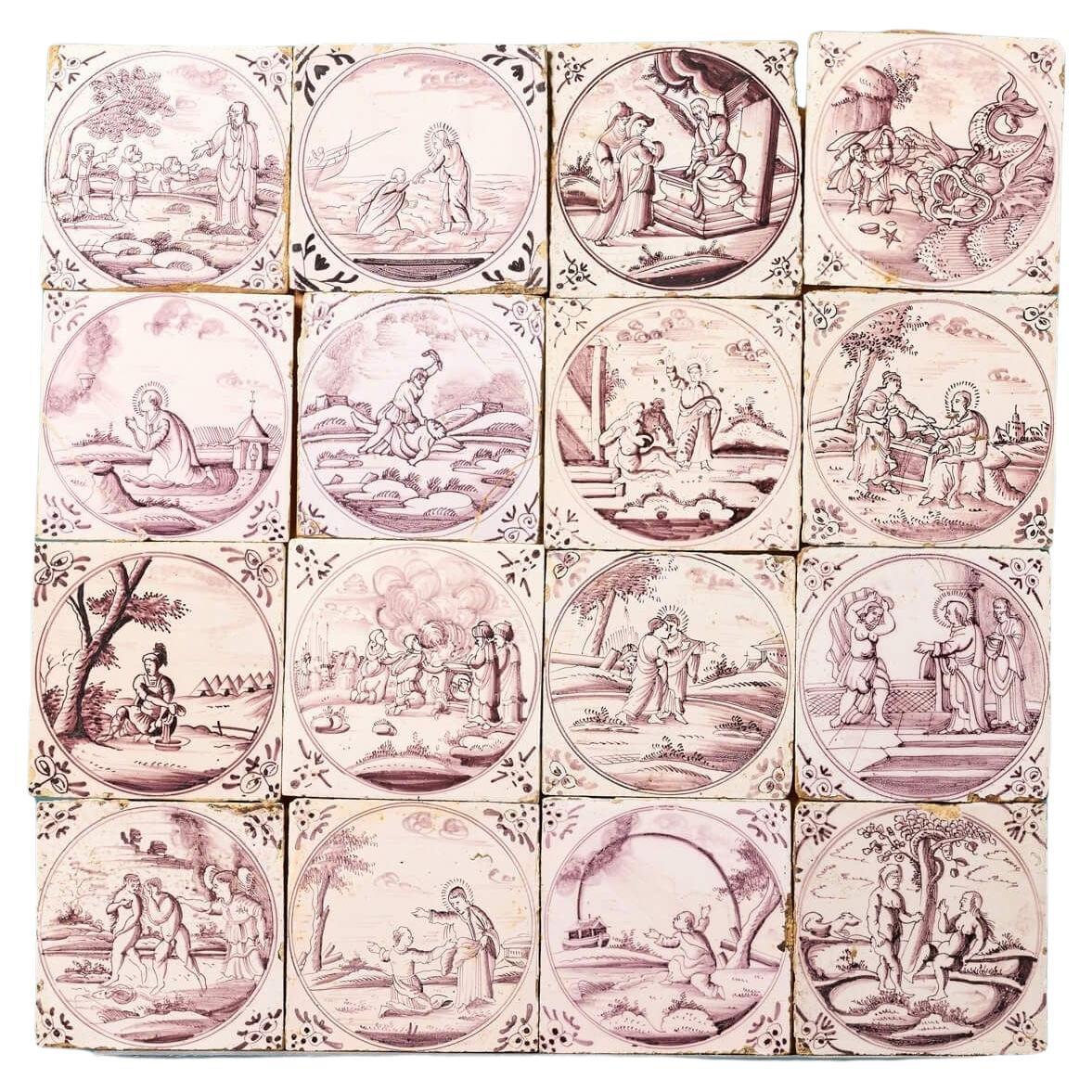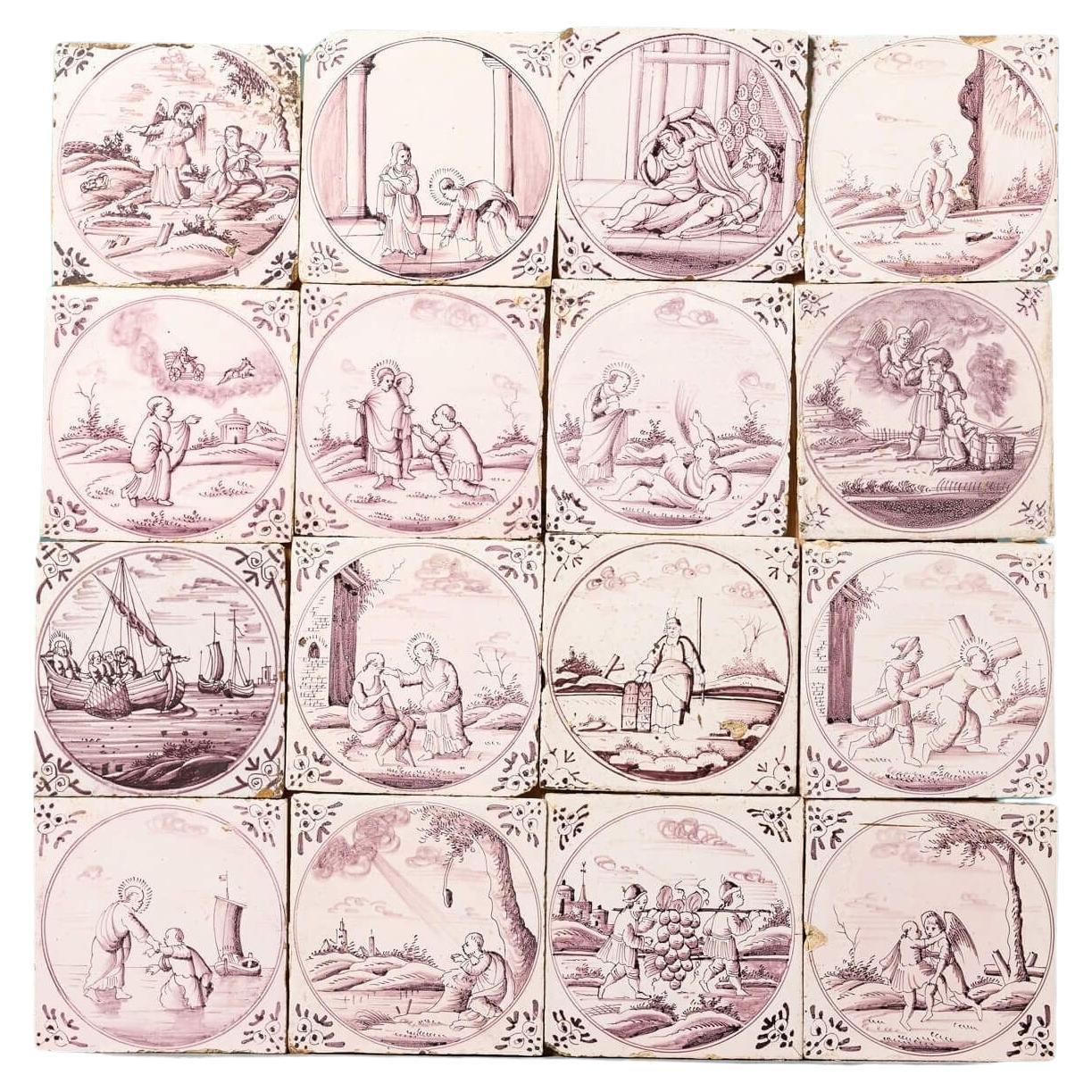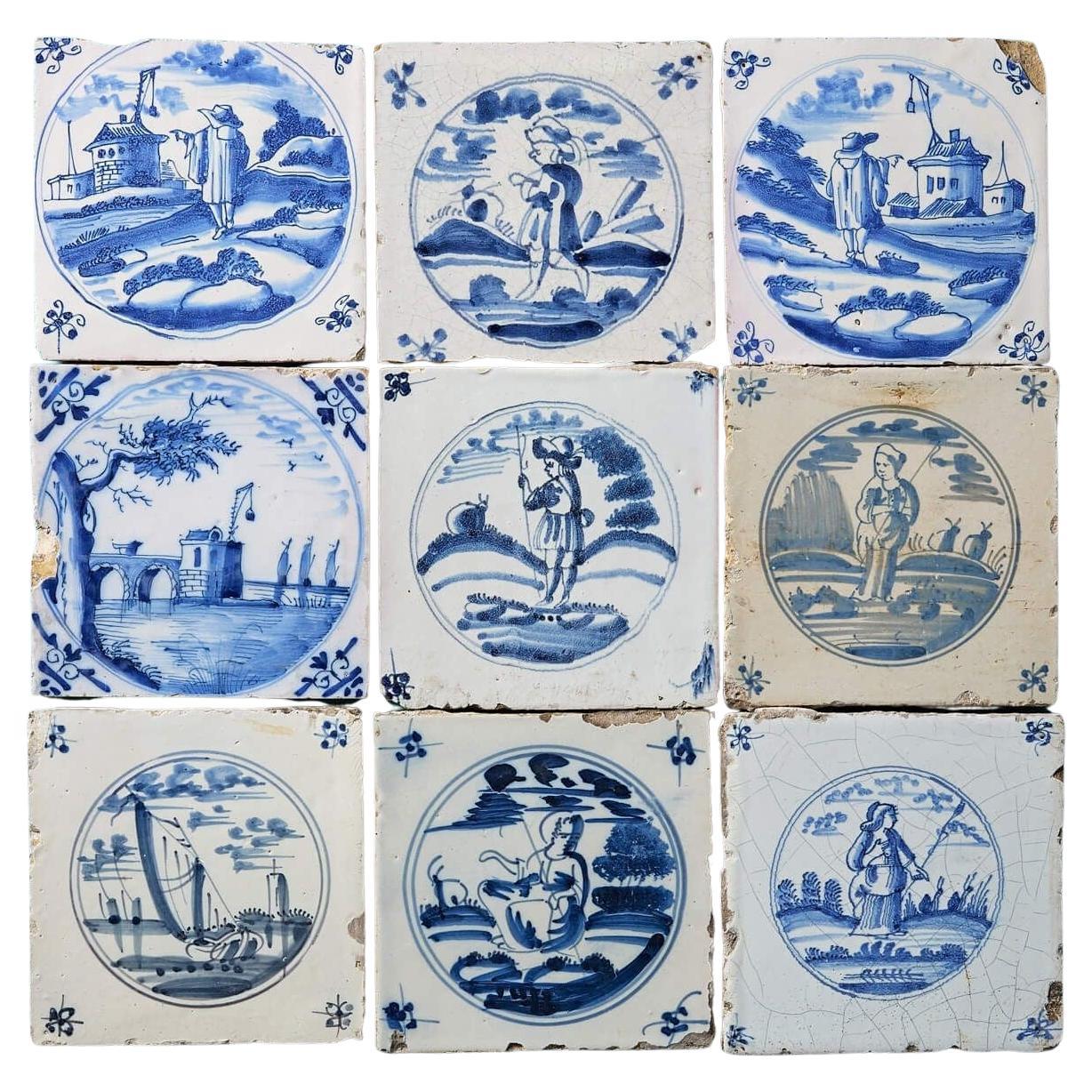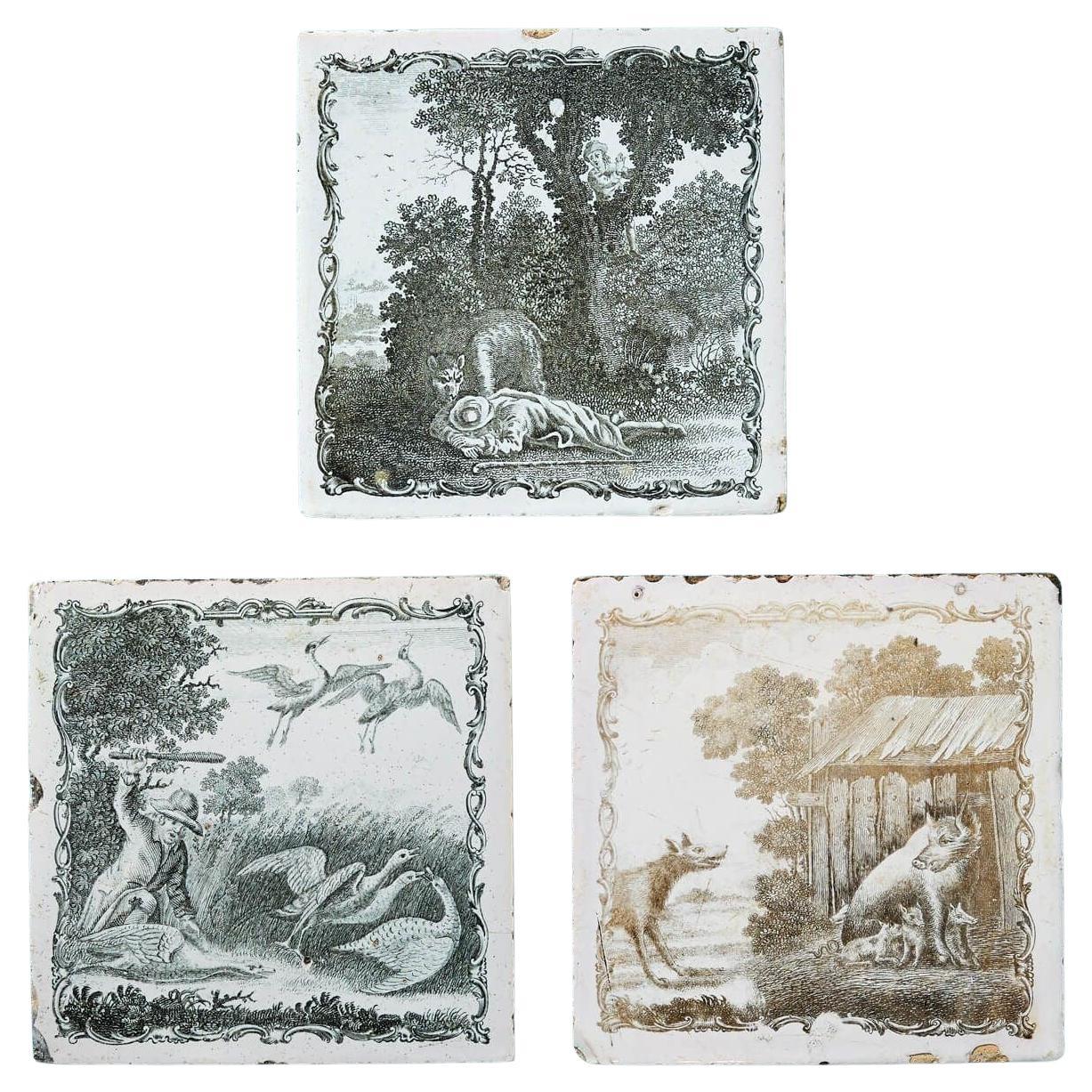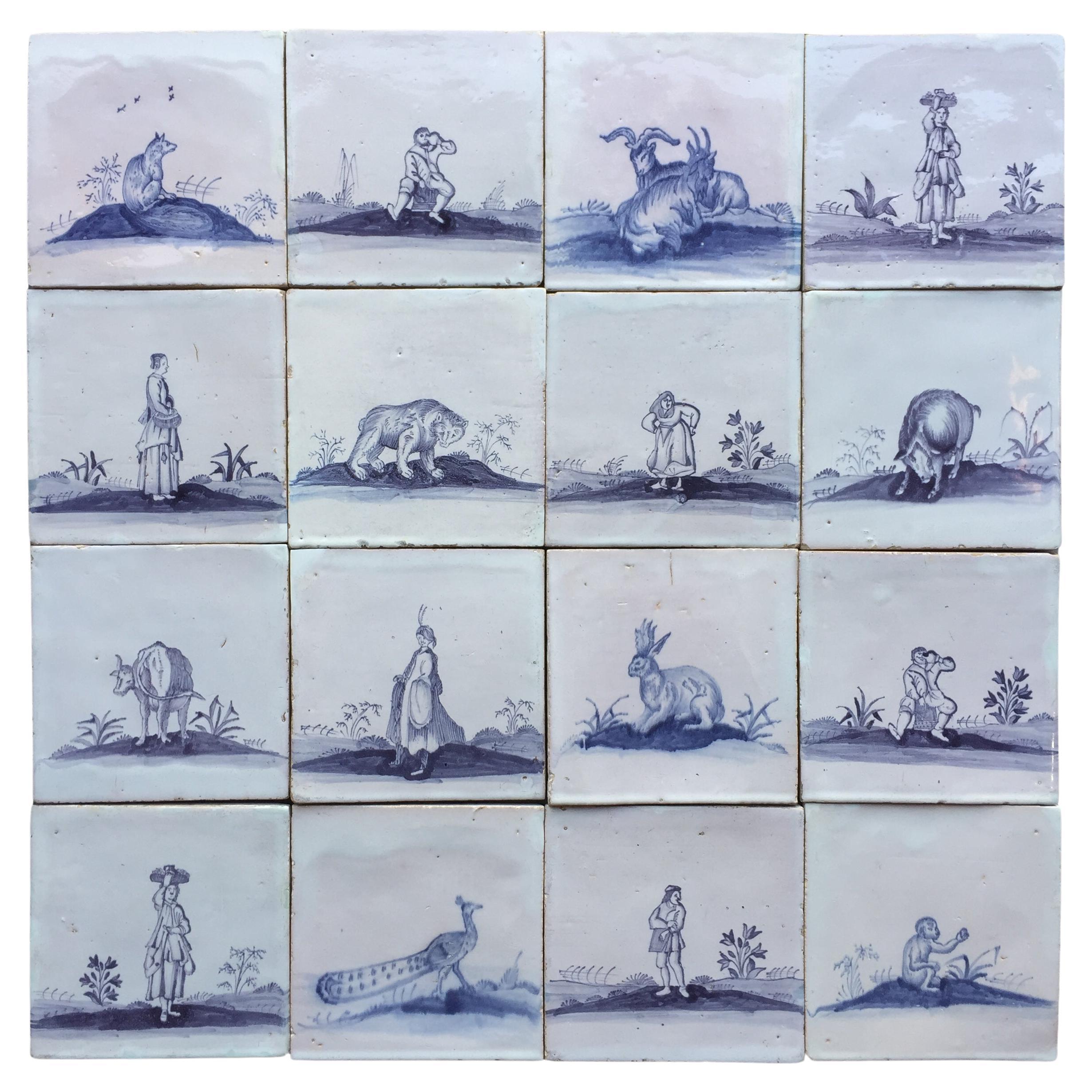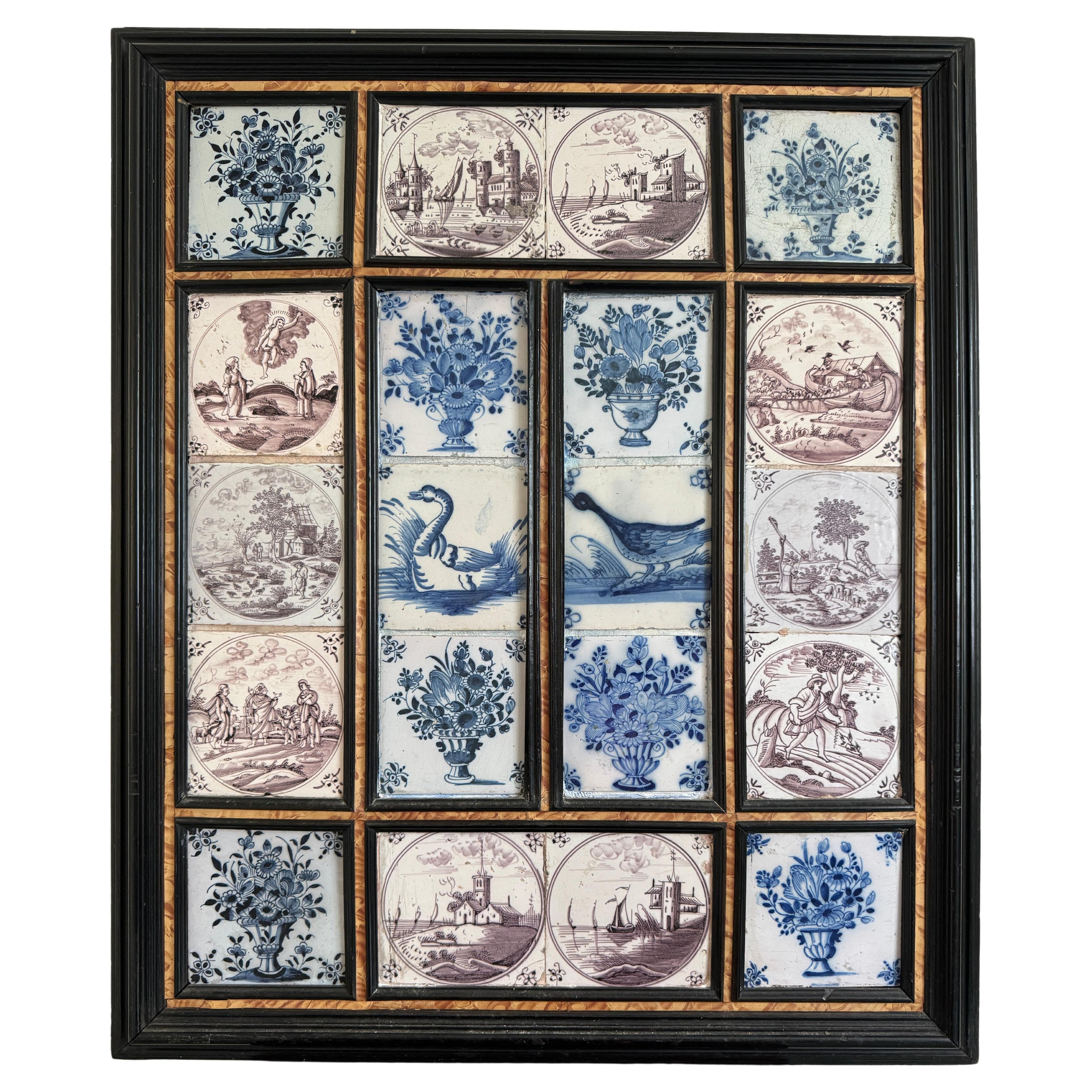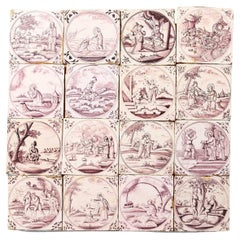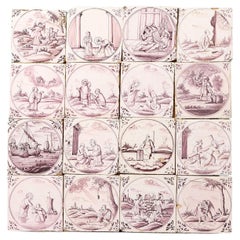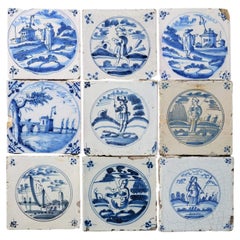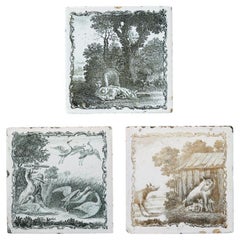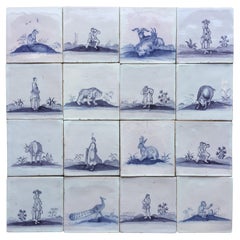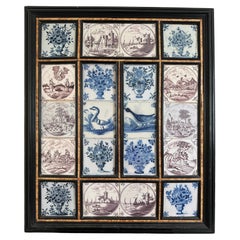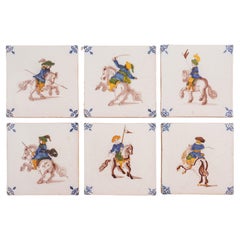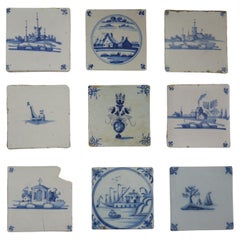Items Similar to Set of 9 Antique Delft Tiles depicting Biblical Scenes
Want more images or videos?
Request additional images or videos from the seller
1 of 5
Set of 9 Antique Delft Tiles depicting Biblical Scenes
$2,259.84
£1,675
€1,948.20
CA$3,159.81
A$3,453.30
CHF 1,817.24
MX$41,362.02
NOK 22,871.77
SEK 21,361.35
DKK 14,551.30
About the Item
A set of 9 antique Delft tiles depicting biblical scenes. Dating to the 18th century, each tile is painted in manganese and white with varying scenes from the Old Testament.
These reclaimed tiles have been in use for over 200 years and as such have a characterful, timeworn look with scuffs and crazing that only enhances their beauty.
Pictured in a 3 by 3 panel, these 5 inch tiles display carnation motifs to the corners and the various scenes are displayed in roundels with text underneath for each verse.
The tile that shows a baby being handed to a man in a temple illustrates Luke 2:25 - "Now there was a man in Jerusalem, whose name was Simeon, and this man was righteous and devout, waiting for the consolation of Israel, and the Holy Spirit was upon him."
While another represents the passage from Luke 2:22 - "When the time came for their purification according to the law of Moses, they brought him up to Jerusalem to present him to the Lord.”
John 10:11 also features, showing a man chasing off dogs: “I am the good shepherd. The good shepherd sacrifices his life for the sheep.”
Delft Tiles
Delft dates back as far as the early 1500s. The Dutch city of Delft, after which the pottery is named, was the major centre of its production. Tiles and pottery made from Delft are applied with a tin and magnesium glaze that gives them their distinctive purple-blue colour.
Their well-known blue and white tiles appeared around 1620 and became world famous, often painted with scenes from daily life and used to decorate kitchens, chimneypieces, staircases and more.
We have others in the same design depicting the New Testament, available for purchase in panels of 16 (as pictured). Please enquire for more details.
Additional dimensions
Each tile is approx 13cm x 13xcm square (5.12in x 5.12in), 8cm deep (3.15in).
The overall weight for the batch is 5kg (11lbs).
We have other similar tiles available under stock no. 33938 and 35545.
- Creator:Delft (Maker)
- Dimensions:Height: 20.48 in (52 cm)Width: 20.48 in (52 cm)Depth: 3.15 in (8 cm)
- Style:Georgian (In the Style Of)
- Materials and Techniques:
- Place of Origin:
- Period:
- Date of Manufacture:1750
- Condition:Good structural condition. Surface wear, small nibbles and chips. Remnants of mortar to the back.
- Seller Location:Wormelow, GB
- Reference Number:Seller: 9339421stDibs: LU2096339658632
About the Seller
4.9
Platinum Seller
Premium sellers with a 4.7+ rating and 24-hour response times
Established in 2006
1stDibs seller since 2016
766 sales on 1stDibs
Typical response time: 5 hours
- ShippingRetrieving quote...Shipping from: Wormelow, United Kingdom
- Return Policy
More From This Seller
View AllSet of 16 Antique Delft Tiles Depicting Biblical Scenes
By Delft
Located in Wormelow, Herefordshire
A set of 16 antique Delft tiles depicting biblical scenes. Dating to the 18th century, each tile is painted in manganese and white with varying sce...
Category
Antique Mid-18th Century English Georgian Flooring
Materials
Clay
Set of 16 Antique Delft Floor Tiles Depicting Biblical Scenes
By Delft
Located in Wormelow, Herefordshire
A set of 9 antique Delft tiles depicting biblical scenes. Dating to the 18th century, each tile is painted in manganese and white with varying scenes from the New Testament.
These r...
Category
Antique Mid-18th Century English Georgian Architectural Elements
Materials
Clay
Collection of Nine Antique Delft Tiles
Located in Wormelow, Herefordshire
A collection of nine 5-inch antique Delft tiles depicting Dutch scenes with windmills, maidens and soldiers, all of which are in expressive blue colourin...
Category
Antique Late 18th Century Dutch Jacobean Architectural Elements
Materials
Clay
Set of 18th Century Transfer Printed Liverpool Delft Tiles
Located in Wormelow, Herefordshire
A set of three mid-18th century Delft style tiles by Sadler & Green of Liverpool dating from circa 1765.
Ex. private British collection, these decorative antique tiles are each tra...
Category
Antique Mid-18th Century English Georgian Mounted Objects
Materials
Clay
Set of Antique Blue & White Delft Style Border Tiles
Located in Wormelow, Herefordshire
Four late 18th / early 19th century antique Delft style border tiles, each handpainted with a blue and white cartouche with birds, a peacock and a figure to the centre. Dating from c...
Category
Antique Late 18th Century Dutch Georgian Mounted Objects
Materials
Clay
Set of 4 Antique Minton Tiles of Delft Design
By Minton
Located in Wormelow, Herefordshire
A set of four antique Minton tiles after designs by Dutch Delft tiles, sourced from an ex British private collection.
Dating to circa 1860, these striking 5-inch tiles have been in ...
Category
Antique Mid-19th Century English Victorian Antiquities
Materials
Clay
You May Also Like
Set of 16 Blue and White Delft Tiles with Animals and Figures, 18th Century
Located in AMSTERDAM, NH
Germany
Ansbach
18th century
A set of 16 blue and white, with manganese tint, tiles with decorations of animals and figures.
Very fine painting and much detail in the animals and fi...
Category
Antique Mid-18th Century German Baroque Delft and Faience
Materials
Ceramic, Faience, Majolica
$4,543 Sale Price
20% Off
Free Shipping
Framed Collection of 20 Antique Delft Tiles
By Delft
Located in Basildon, GB
A Framed Collection of 20 Antique Delft Tiles, circa 18th Century. Variously decorated in blue and manganese with religious scenes, landscapes, birds and...
Category
Antique 18th Century Dutch Baroque Delft and Faience
Materials
Delft
Set of 6 Old Dutch Hand Painted Delft Tiles by Royal Tichelaar Makkum, c. 1880
By Royal Tichelaar Makkum
Located in Kenilworth, IL
Set of six old Dutch hand painted ceramic tiles attributed to Royal Tichelaar Makkum featuring scenes of equestrian cavaliers.
Netherlands, late 1800's.
Dimensions: 5-1/4" Square x ...
Category
Antique Late 19th Century Dutch Architectural Elements
Materials
Faience
NINE antique Delft Wall Tiles Blue & White scenes, Netherlands mainly 18th C
Located in Lincoln, Lincolnshire
These are NINE Delft ceramic wall tiles, all with different blue and white hand painted patterns, made in the Netherlands, from the 19th Century to the 17th Century, but mainly 18th Century.
Each tile is nominally slightly over 5 inches square..
All nine tiles are unique, being individually hand painted with different scenes and patterns featuring various scenes with buildings, trees, watersides, boats and one floral, with most having spider motif corners. They are all enamelled in cobalt blue, using different shades of blue, which varies slightly from tile to tile as expected:- please see the images.
Two of the tiles have scenes within double blue circles.
NOTES:
The central floral pattern tile is slightly thicker and dates to the 17th C
Seven Tiles are 18th Century and one is 19th Century ( blue tinged glaze)
Overall a beautiful set of individual hand painted antique Delft tiles...
Category
Antique Mid-18th Century Dutch Dutch Colonial Ceramics
Materials
Earthenware
FOUR fine early Delft Blue and White Wall Tiles in Copper frames, Ca 1700
Located in Lincoln, Lincolnshire
These are Four fine Delft ceramic wall tiles all with a blue and white hand painted similar pattern, made in the Netherlands during the late 17th / early 18th Century, circa 1700 and...
Category
Antique Late 17th Century Dutch Dutch Colonial Delft and Faience
Materials
Earthenware
Set Four Dutch Manganese Biblical Pottery Tiles, 18th Century
Located in Bishop's Stortford, Hertfordshire
A wonderful set of four antique Dutch ‘Delft’ style manganese tiles hand decorated with biblical scenes probably originating from Rotterdam and dating f...
Category
Antique 18th Century Dutch Arts and Crafts Ceramics
Materials
Ceramic
More Ways To Browse
Antique 1500s
Delft Tiles
Blue White Tile
Old Tiles
Blue And White Tiles
Holy Spirit
Delft Tiles Furniture
Delft Holland Pottery Blue And White
Antique Delft Tiles
Blue And White Delft Tiles
Blue White Tiles Antique
Antique Pottery Names
Delft Tile Set
The Good Shepherd
Wooden Sculpture Of Couple
African Dogon Ladder
Ancient Greece Helmets
Ancient Greek Helmet
